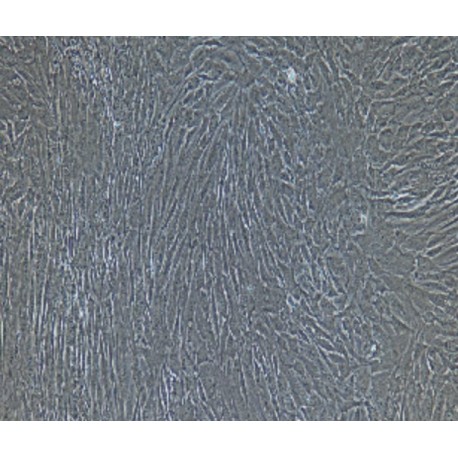-
 1.00 x 1.00mg AEM1$15.00
1.00 x 1.00mg AEM1$15.00 -
 1.00 x 1.00mg Rabeprazole$17.00
1.00 x 1.00mg Rabeprazole$17.00 -
 1.00 x 1.00mg Monoxerutin$249.00
1.00 x 1.00mg Monoxerutin$249.00 -
 1.00 x 1.00mg Iclepertin$192.00
1.00 x 1.00mg Iclepertin$192.00 -
 1.00 x 1.00mg Golexanolone$249.00
1.00 x 1.00mg Golexanolone$249.00 -
 1.00 x 1.00mg Pico145$100.00
1.00 x 1.00mg Pico145$100.00 -
 1.00 x 1.00mg ICI 204,448$41.00
1.00 x 1.00mg ICI 204,448$41.00 -
 1.00 x 1.00mg S 16924$249.00
1.00 x 1.00mg S 16924$249.00 -
 1.00 x 1.00mg (S)-PF-06873600$44.00
1.00 x 1.00mg (S)-PF-06873600$44.00 -
 1.00 x 1.00mg Xanthoangelol$126.00
1.00 x 1.00mg Xanthoangelol$126.00
No products
Product successfully added to your shopping cart
There are 10 items in your cart. There is 1 item in your cart.
Primary Cells
- Protein Control Ligand
- Pathway Inhibitors
- Enzyme Inhibitors
- Kinase Inhibitors
- Protease
- Synthase
- p18
- p38
- p53
- p70
- p90
- Peptidase
- Carboxyl and Decarboxylases
- Ceramide Turnover Enzymes
- Chromatin Modifying Enzymes
- Cyclic Nucleotide Turnover Enzymes
- Glycerophospholipid Turnover Enzymes
- Hydroxylases
- Ubiquitin-Activating Enzyme
- Adenosine Deaminase
- Clathrin
- Nuclease
- p68
- ACE
- COX
- DHFR
- Neprilysin
- NF-κB
- RAF
- RAS
- Reductase
- ROR
- Topoisomerase
- Transferase
- Protein Inhibitors
- Transporter Inhibitors
- Cell Inhibition
- Synthase
- Receptor Tyrosine Phosphatases (RTP)
- AChE
- Peptidase
- Autophagy
- Toll-Like Receptor (TLR)
- Enzyme Inhibitors
- Function Modulators
- Activators
- G Protein-Coupled Receptor Ligands
- 5HT Receptors
- Adrenoceptor
- Angiotensin Receptor
- Cannabinoid Receptors
- CCK Receptors
- DA Receptors
- EAA Receptors
- Ghrelin Receptors
- GABA Receptors
- Histamine Receptors
- Leukotriene Receptors
- Metabotropic Glutamate Receptors
- Motilin Receptors
- Muscarinic Receptor
- Neuropeptide Receptors
- Opioid Receptors
- Orexin Receptors
- Orphan Receptors
- Prostanoid Receptors
- Proteinase-Activated Receptors
- Purinergic Receptors
- Ryanodine receptor
- Sigma Receptors
- Thrombin Receptor
- Vaniloid Receptor
- VIP and PACAP Receptors
- Neurotensin Receptors
- Urotensin Receptor
- Imidazoline receptor
- SMO Receptors
- Apelin Receptor
- β-arrestin/β2-adaptin
- KDM4
- Glucocorticoid Receptor
- Laminin Receptor
- AHR
- Amylin Receptor
- Bombesin Receptor
- Bradykinin Receptor
- CFTR
- CGRP Receptor
- CRFR
- Endothelin Receptor
- Ephrin Receptor
- Farnesoid X receptor (FXR)
- Glucagon Receptor
- Nuclear Receptor Ligands
- GDNF Receptors
- TNF Receptors
- Transcription Factors
- Chemokines
- Cytokine Receptors
- Biomarkers and Buffer Solutions
- Molecular Probes
- Stem Cell Research
- Alzheimer's Disease
- Apoptosis
- Cancer Research
- Epigenetics
- Metabolites
- PET/SPECT Imaging Precursors
- Customized Screening Library
- Ultra Pure Pharmacological Standard
- Tissue Microarray (TMA)
- Proteins and Antibodies
- Primary Cells
- ELISA KIT
- Natural Products
- Lab Equipments
- Humanized Mice for PDX Platform
- Rare Chemicals
- Custom Synthesis
- Antibacterial
- Antifungal
- Antioxidant
- Antiviral
- Molecular Glues
- PROTAC Linker
- SARS-CoV
 View larger
View larger Human Primary Gastric Fibroblasts Cells
HUM-d006
Each vial contains >5x105 cells in 1mL volume
Molarity Calculation Cart®
HOW TO ORDER
More info
Cell Details
The stomach is the digestive organ of the human body. It is located under the armpit. The stomach wall is composed of four layers: mucosa, submucosa, muscular layer and adventitia, and has the distribution of nerves, blood vessels and lymphatic vessels. Among them, fibroblasts are mainly distributed in the lamina propria, submucosa and outer membrane layers in the mucosa layer.
Fibroblasts are the most common cells in connective tissue. Under electron microscope, abundant rough endoplasmic reticulum, free ribosome and Golgi complex are found in the cytoplasm of fibroblasts, indicating that they have the function of synthesizing and secreting proteins. One of the main functions of fibroblasts is the synthesis of collagen and other extracellular matrices, which play an important role in the process of tissue and organ fibrosis.
Cell Characteristics
1) The cells are derived from normal gastric tissue that has been surgically removed.
2) Cell identification: Fibronectin or vimentin was positive for immunofluorescence staining.
3) The purity of the identified cells is higher than 90%.
4) Does not contain HIV-1, HBV, HCV, mycoplasma, bacteria, yeast and fungi.
5) Cell growth mode: fibroblast-like cells, adherent culture.
Transportation and Preservation
Depending on the weather conditions and the distance of transportation, the company negotiates with the customer and chooses one of the following methods.
1) 1mL of frozen cell suspension is placed in a 1.8mL cryotube and placed in a foam incubator filled with dry ice for transport; after receiving the cells, thaw the resuscitated cells as soon as possible for culture. If resuscitation is not possible immediately, Cryopreserved cells can be stored at -80°C for 1 month.
2) T-25 culture flask is filled with complete medium and then transported at room temperature. After receiving the cells, please observe the growth state of the cells under a microscope. If the bottle filling rate exceeds 85%, please carry out the subculture immediately. If there are more cells in suspension, allow the flask to stand overnight in the incubator to help the undead suspension cells to reattach.
Product Use
1) This product can only be used for scientific research
2) This product has not passed the audit for living animals and humans directly.
3) This product has not passed the audit for in vivo diagnosis.

